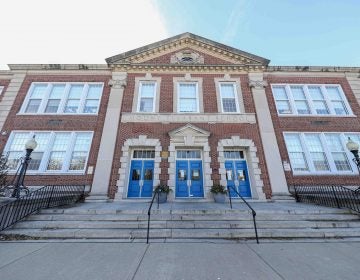Plans for STEM Hub at Wilmington school aim to empower marginalized communities’ future
A $26 million project aims to overcome educational gaps through a STEM program that will also address mental health services for the communities.

Eastside Charter School in Wilmington, Del. (Eastside Charter School website)
From Philly and the Pa. suburbs to South Jersey and Delaware, what would you like WHYY News to cover? Let us know!
Two years ago, school leaders at Eastside Charter School unveiled plans for the Chemours STEM Hub, a science and technology center at the Riverside school. The project, funded by the chemical company that was a DuPont spin-off in 2015, marked the start of what officials hope will be a transformative journey for students and the surrounding community.
Eastside Charter CEO Aaron Bass said too many students lack access to opportunities.
“I can’t find the access point outside of those that are doing exceptionally well in school. How does a young person in Southbridge then figure out how they can work at Chemours,” he said. “How does somebody in Riverside determine that they can become an executive at Barclays unless they can see a credible path to make that happen?”
The $26 million project was born out of the school’s desire to address a crucial issue: ensuring that students have access to the driving forces of Delaware’s economy, like medical fields, manufacturing, and banking systems.
“The issue we wanted to address was one making sure that young people had access to them,” Bass said. “It is the number one driver of the economy here in Delaware when you look at our medical field manufacturing when you look at even our banking system.”
At the initiative’s core is a two-way immersion — where students attend classes during the day and engage with state-of-the-art STEM equipment. Bass says the building will be more than just a place for theoretical discussions, but will allow educators to provide tools for their students to use and learn.
“It’ll also be wonderful for our teachers to make sure that not only are they talking about STEM in terms of theory, but ‘this is actually your CSC cutter, here’s our makerspace, here is a laser cutter, 3D printers, etc.,’” he said. “And that they’re able to bring professionals in to work with students.”
Eventually, as students wrap up their day at school, the Wilmington Library will take the reins to oversee programming during after-school hours, inviting community members to participate and elevating engagement.
“The Wilmington library was a wonderful partner because they are very impressive in getting the community behind their work. This has been engaging with celebrities as well as authors as well as the public, and they will be running the facility after school hours,” Bass said. “The benefit for the public is making sure that anybody in the entire state that wants to, can have access to STEM. This is the number one go-to spot.”
Spanning 40,000 square feet, the STEM Hub is poised to extend the charter school’s reach with an extra 20 classes, incorporating a specialized gaming and coding center and an advanced maker space.
“Our students will have a gaming lab where they can work with state-of-the-art equipment to learn how to game. Our students will have state-of-the-art equipment to deal with coding,” he said. “So for students that are now taking classes in robotics. They can now design their own robot and build it and have the technology to do that.”
Furthermore, the facility will offer numerous office spaces to seamlessly integrate a variety of community programs, including things like mental health services.
“We have to address the other issues of trauma, of mental health that are plaguing our community where there might not be access to resources there as well. So this space, in addition to being a powerhouse of STEM in the entire state, will also be a space for families whether they attend Eastside Charter School or not,” he said.
Bass sees the STEM Hub as the pathway for the future vision of Eastside Charter School.
“We know that to prepare young people for successful lives, we have to make sure that they’re able to grow up in an environment that is conducive to their learning. That means that addressing issues of poverty are very important and that means access to careers, that means training, that means that there’s a pathway that they can see as a viable option,” he said. “A STEM Hub is a way that we can say not only do we believe that this is the education you should receive, but this is how it plays out for you if you’re successful in this field.”

Get daily updates from WHYY News!
WHYY is your source for fact-based, in-depth journalism and information. As a nonprofit organization, we rely on financial support from readers like you. Please give today.






